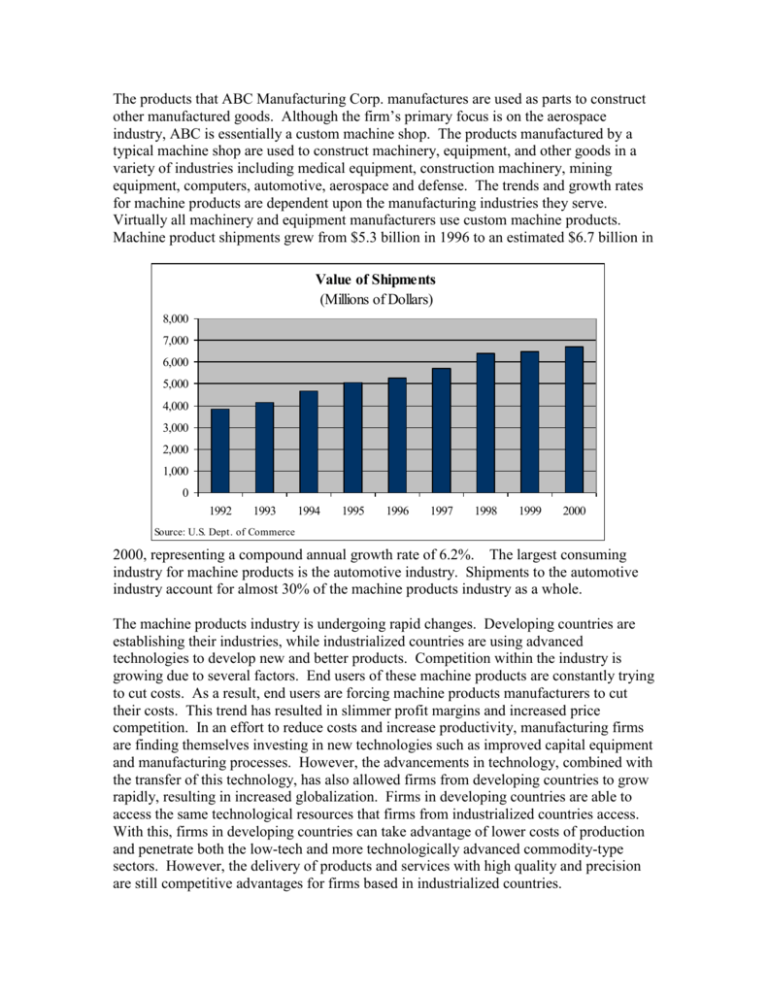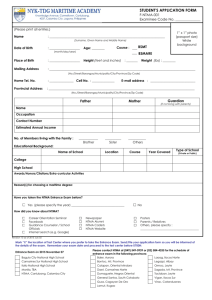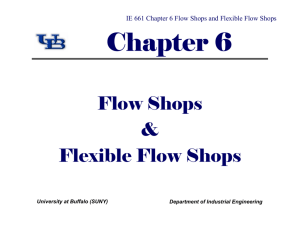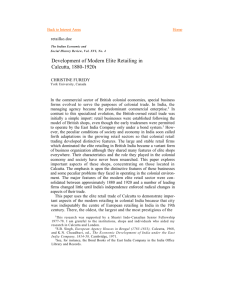The products that ABC Manufacturing Corp
advertisement

The products that ABC Manufacturing Corp. manufactures are used as parts to construct other manufactured goods. Although the firm’s primary focus is on the aerospace industry, ABC is essentially a custom machine shop. The products manufactured by a typical machine shop are used to construct machinery, equipment, and other goods in a variety of industries including medical equipment, construction machinery, mining equipment, computers, automotive, aerospace and defense. The trends and growth rates for machine products are dependent upon the manufacturing industries they serve. Virtually all machinery and equipment manufacturers use custom machine products. Machine product shipments grew from $5.3 billion in 1996 to an estimated $6.7 billion in Value of Shipments (Millions of Dollars) 8,000 7,000 6,000 5,000 4,000 3,000 2,000 1,000 0 1992 1993 1994 1995 1996 1997 1998 1999 2000 Source: U.S. Dept. of Commerce 2000, representing a compound annual growth rate of 6.2%. The largest consuming industry for machine products is the automotive industry. Shipments to the automotive industry account for almost 30% of the machine products industry as a whole. The machine products industry is undergoing rapid changes. Developing countries are establishing their industries, while industrialized countries are using advanced technologies to develop new and better products. Competition within the industry is growing due to several factors. End users of these machine products are constantly trying to cut costs. As a result, end users are forcing machine products manufacturers to cut their costs. This trend has resulted in slimmer profit margins and increased price competition. In an effort to reduce costs and increase productivity, manufacturing firms are finding themselves investing in new technologies such as improved capital equipment and manufacturing processes. However, the advancements in technology, combined with the transfer of this technology, has also allowed firms from developing countries to grow rapidly, resulting in increased globalization. Firms in developing countries are able to access the same technological resources that firms from industrialized countries access. With this, firms in developing countries can take advantage of lower costs of production and penetrate both the low-tech and more technologically advanced commodity-type sectors. However, the delivery of products and services with high quality and precision are still competitive advantages for firms based in industrialized countries. In an effort to reduce costs and product lead times, and increase quality, manufacturing companies are beginning to outsource more and more component Reasons for Outsourcing manufacturing. Machine shops will be able to benefit from the expanded 11% opportunities this trend presents. Outsourcing has also developed a Manufacturig Cost Savings 12% trend towards “simultaneous 34% Avoid Capital Equipment engineering.” Manufacturing Investment companies that outsource their Technical Expertise of components want more than just Contract Manufacturer manufacturing services, they are 13% Improve Quality of working more closely with the Finished Product machine shops. By doing so, they Design Expertise of can leverage the toolmakers’ Contract Manufacturer knowledge to produce a better end product. As a result, the traditional 30% Source: Purchasing OnLine customer-supplier relationship is evolving into more of a technological-partner relationship. Employment (000's) The machine products industry is extremely 65 localized in nature. Most companies are in 60 close proximity to their major customers. 55 50 Machine shops that are located near major 45 manufacturers are able to make a move 40 towards just-in-time delivery. 35 Approximately 60,800 people are currently 30 1992 1993 1994 1995 1996 1997 employed as a result of the machine Source: U.S. Dept. of Commerce products industry. This represents a 6.5% increase from 57,100 people in 1998. The hourly earnings for a machine products employee’s increased 13% from $11.29 in 1993 to $12.76 in 1999, a trend which also cuts Hourly Earnings into profits. However, one of the major $13.00 issues facing machine shops is the shortage $12.50 of skilled labor. This shortage has become $12.00 more pronounced with the industry’s rapid $11.50 move towards more computerized and $11.00 sophisticated equipment and processes. The $10.50 machine products industry has concluded $10.00 that work force development will play an 1992 1993 1994 1995 1996 Source: U.S. Dept. of Commerce essential role in maintaining the industry’s global competitiveness. The U.S. machine products industry is highly competitive when it comes to producing custom or specially engineered products due to the need for high quality and service. Education and training 1997 systems must be developed and strengthened in order to supply the industry with the necessary workforce. As a result, the National Tooling and Machining Association (NTMA) has set up apprenticeship programs and training centers. The NTMA is also developing a national set of skill standards and certification for all metalworking industries. Competition within the industry is growing rapidly. Manufacturers are under pressure to lower cost and increase quality. As a result, profits within the machine products industry will remain lackluster. Asian producers have proven to be the greatest competition. Asian producers are able to benefit from a skilled workforce, lower wage rates, and higher levels of investment in technology. In order to stay competitive, U.S. machine shops are learning more about the applications of high speed machining and are investing in more capable machine tools. Productivity within the industry is being increased through the use of computer aided manufacturing systems, and high speed machining. In addition, the U.S. machine shops are increasing their exporting efforts and exploring new markets. As Mexico and Canada emerge from stagnant economic conditions, opportunities within these areas are expected to grow. In 1998, approximately 58% of exports went to customers in the NAFTA region. U.S, machine shops are also looking to Europe, Asia, and Latin America for export opportunity. Asian and Latin American markets are expanding as these regions continue to invest heavily in their infrastructure. ABC does not have a proprietary product of its own and, much like its competition, it is dependent upon the manufacturing industries. As stated earlier, competition within the custom machine products industry is fierce. Key factors for success within this industry include: Commitment to quality Price References/reputation Timely delivery Responsiveness Flexible contract terms Resources availability Firm’s value-added capability Existing relationship











